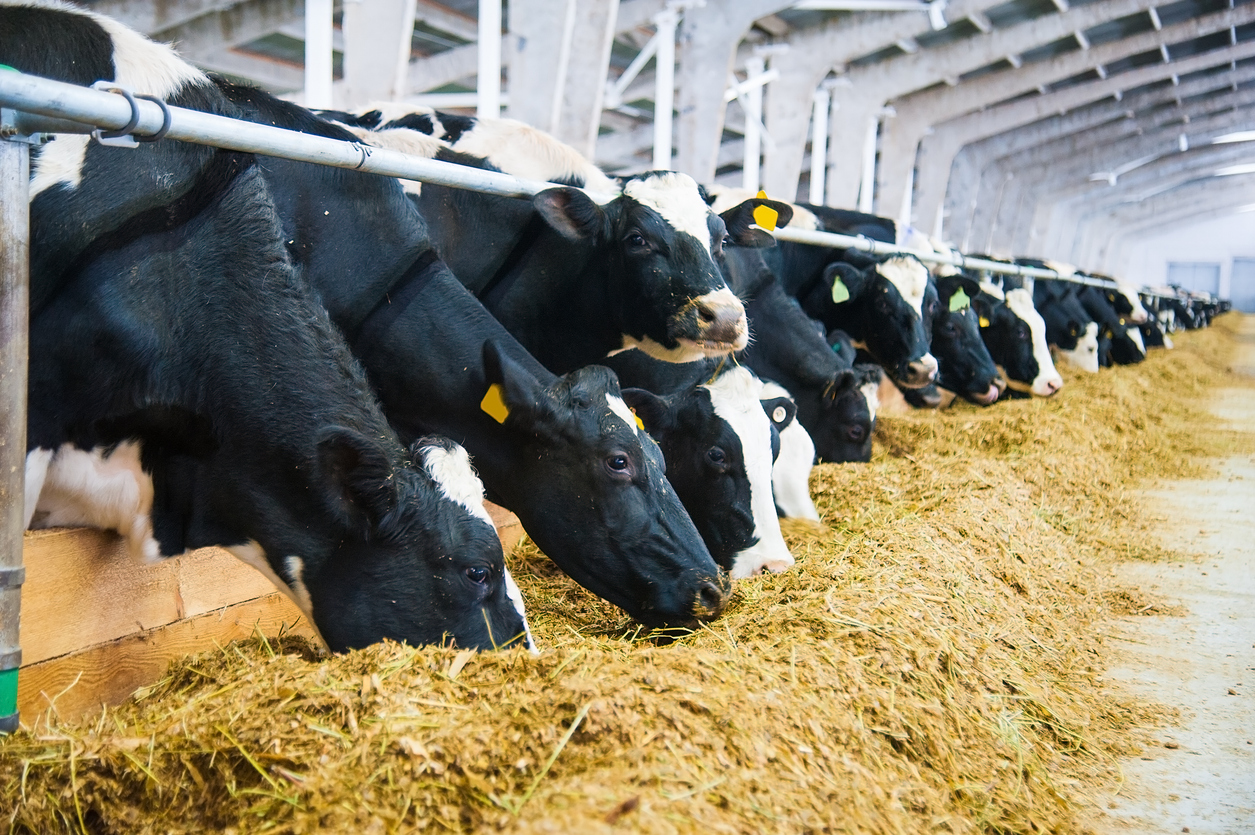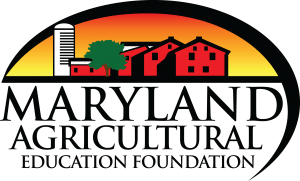
Cattle feeding on hay
Dairy Cow Genes
Grade 9-12
This lesson focuses on two main ideas:
- How the DNA of cattle can lead to variation in cattle.
- How farmers can use genetics and inherited traits to crossbreed certain cattle in order to produce ones with desired traits.
Procedure
INTRODUCTION (15 minutes)
Read the introduction to students and review new vocabulary. Students will watch the "Maryland Farm and Harvest - Episode 1006 - Dairy Cow Genes” video. After the video, discuss the essential questions and thinking questions aligned to the topic and video. Discuss with students, the career connections related to dairy cows and genetics.
EXTENSION (15-30 minutes)
Complete extension activities with students, as you deem appropriate.
ASSESSMENT (15 minutes)
Have students apply their newfound knowledge by completing a Summative CER on the lesson using evidence from the video and activities as support.
REFLECTION (10 minutes)
Have students complete a reflection.
Standards
HS-LS3-1 Heredity: Inheritance and Variation of Traits
Ask questions to clarify relationships about the role of DNA and chromosomes in coding the instructions for characteristic traits passed from parents to offspring.
- Science and Engineering Practices
Asking Questions and Defining Problems
Asking questions and defining problems in 9-12 builds on K-8 experiences and progresses to formulating, refining, and evaluating empirically testable questions and design problems using models and simulations.- Ask questions that arise from examining models or a theory to clarify relationships.
- Disciplinary Core Ideas
LS1.A: Structure and Function
- All cells contain genetic information in the form of DNA molecules. Genes are regions in the DNA that contain the instructions that code for the formation of proteins.
LS3.A: Inheritance of Traits
- Each chromosome consists of a single very long DNA molecule, and each gene on the chromosome is a particular segment of that DNA. The instructions for forming species’ characteristics are carried in DNA. All cells in an organism have the same genetic content, but the genes used (expressed) by the cell may be regulated in different ways. Not all DNA codes for a protein; some segments of DNA are involved in regulatory or structural functions, and some have no as-yet known function.
- Crosscutting Concepts
Cause and Effect
- Empirical evidence is required to differentiate between cause and correlation and make claims about specific causes and effects.
Standard 2
Human Dependence on Earth Systems and Natural Resources:
Environmentally literate students construct and apply understanding of how Earth’s systems and natural resources support human existence.
Summative CER
Option 1:
Construct an argument regarding how the DNA in cattle plays a role in dairy production. Use evidence and reasoning from the videos and activities to support your response.
Option 2:
Develop a scientific explanation regarding how farmers can produce dairy cattle with the best traits for dairy production. Use evidence and reasoning from the videos and activities to support your explanation.
Reflection Questions
- What are the factors that aid farmers in producing such a variety of cattle?
- How can farmers use concepts related to genetics to their advantage when producing cattle for dairy production?
Summative CER Rubric
| Scoring Rubric Components | No Response Score Point 0 |
Not There Yet Score Point 0.5 |
Beginning To Score Point 0.75 |
Yes Score Point 1.0 |
|---|---|---|---|---|
| CLAIM | The claim is missing. | The claim is incorrect or irrelevant. | The claim partially takes a position on the topic or issue addressed within the prompt. | The claim takes an appropriate position on the topic or issue addressed within the prompt. |
| EVIDENCE | There is no type of evidence in the response. | The evidence is irrelevant or does not support the claim. | The evidence partially supports the claim and demonstrates some understanding of the topic or text, using appropriate sources. | The evidence supports the claim and demonstrates a strong understanding of the topic or text, using appropriate sources. |
| REASONING | There is no use of words, phrases, and clauses to create cohesion and to clarify the relationship between the claim and evidence. | Use of words, phrases and clauses fail to show or explain any relationship between the claim and evidence. | Scientific words, phrases, and clauses used lack cohesion but partially clarify the relationship between the claim and evidence. | Appropriate scientific words, phrases, and clauses are used to create cohesion and to clarify the relationship between the claim and evidence. |


